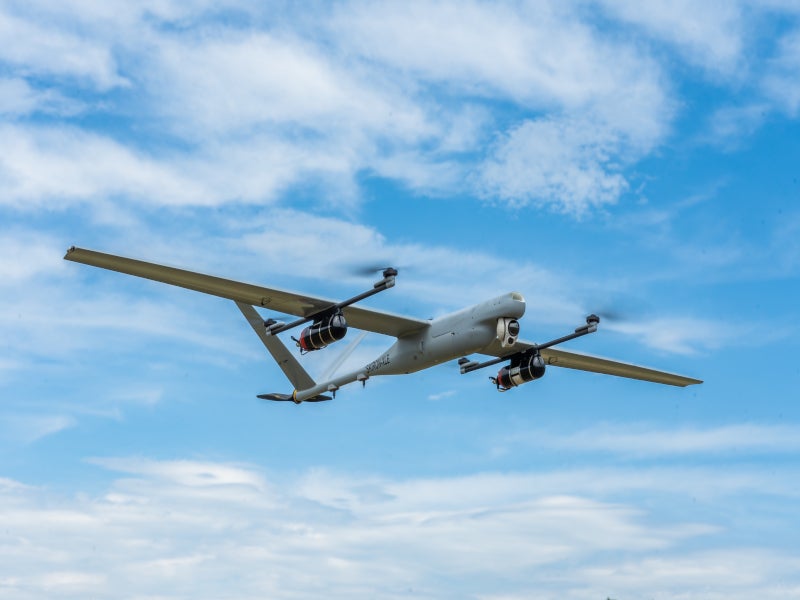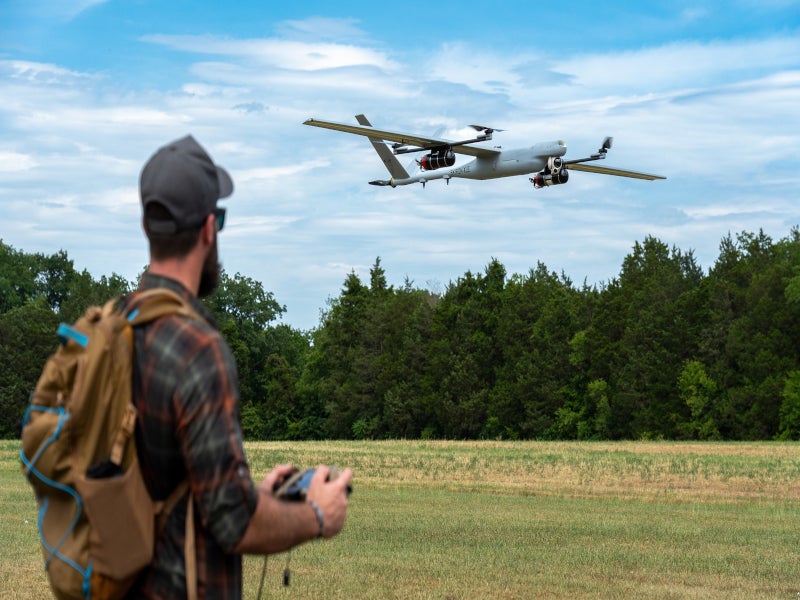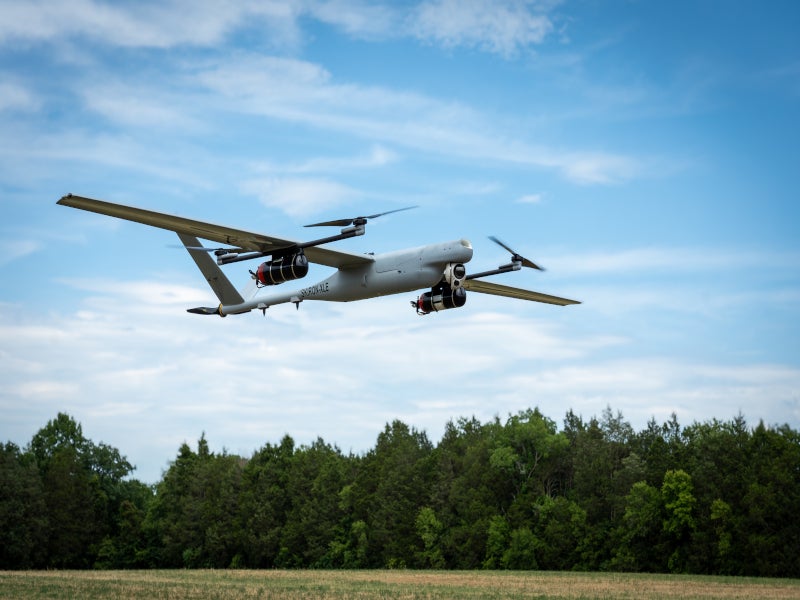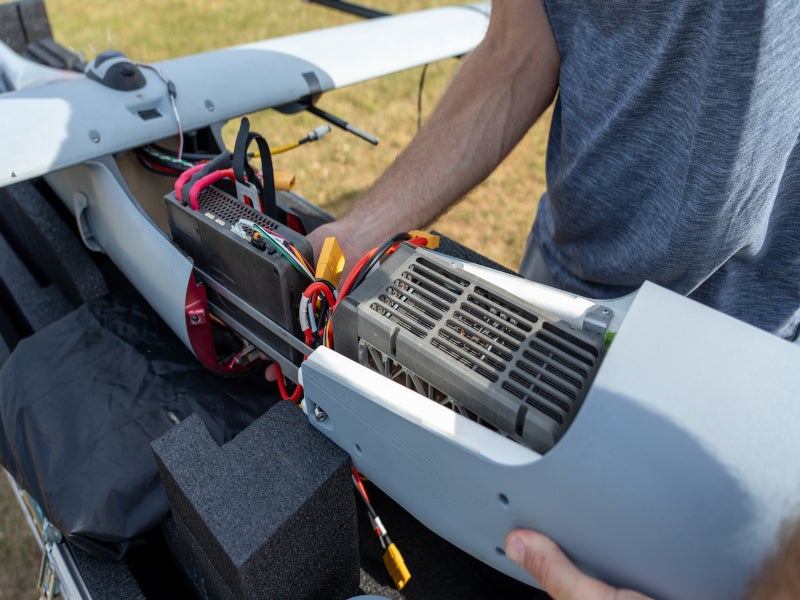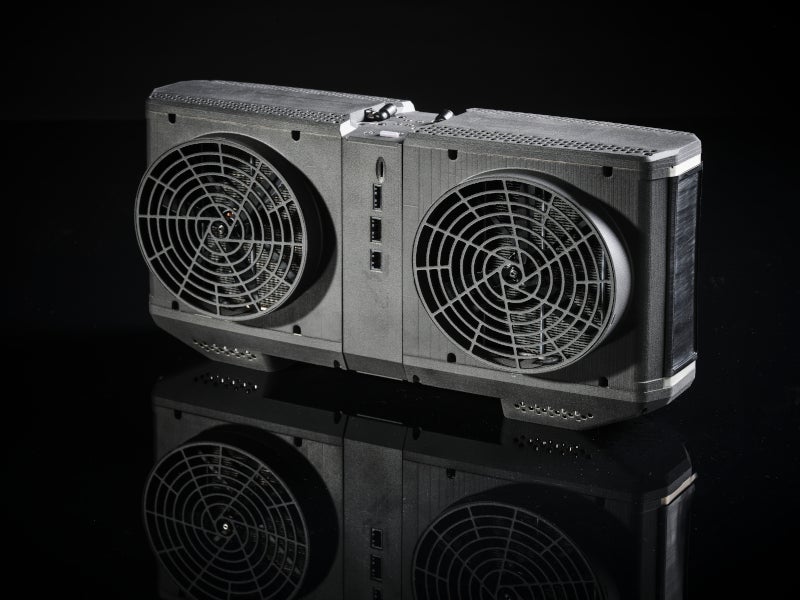The SKIRON-XLE is a Group two small unmanned aerial system (sUAS) that combines the convenience of an electric vertical take-off and landing configuration with a fixed-wing aircraft’s extended range and endurance.
The sUAS was developed by Aurora Flight Sciences, a subsidiary of the aerospace company Boeing. It is engineered to deliver superior airborne intelligence, surveillance, and reconnaissance (ISR) capabilities.
The SKIRON-XLE features a rapid and straightforward setup, the ability to launch and recover from virtually any location, and fully autonomous operation throughout its flight envelope.
It is easily transportable in a standard truck or SUV and can be deployed by a two-person team.
Aurora Flight Sciences unveiled the SKIRON-XLE in June 2024. It is part of the company’s SKIRON sUAS lineup, which also includes the SKIRON-X, a battery-powered version of SKIRON-XLE with a 3.5-hour flight time.
SKIRON-XLE is set for delivery to customers by early 2025.
SKIRON-XLE design and features
The SKIRON-XLE is a lightweight, long-endurance sUAS, specifically tailored for prolonged reconnaissance missions.
It has a length of 7.2ft and a wingspan of 16.6ft. It features a take-off weight of 24.4kg with a maximum payload capacity of 5lb.
The sUAS can sustain flight for up to seven hours with a fuel cell and two 5l hydrogen fuel tanks. It achieves a maximum horizontal speed of 50 knots and typically cruises at 36 knots.
The SKIRON-XLE features a hybrid VTOL fixed-wing design. Its lift rotors facilitate vertical take-offs and landings while the fixed-wing architecture provides enhanced range and endurance.
The system’s flexibility allows for operation in diverse areas, in both missions and training environments.
Training on the system is expedited through intuitive mission planning software, which allows for in-flight mission adjustments.
SKIRON-XLE payload details
The sUAS can be equipped with the Trillium HD25, HD45, and HD55 high-resolution electrooptical/infrared (EO/IR) payloads.
Options for custom payload integration are available, and additional payload spaces such as one standard nose mount, optional belly mount and under-wing payload mounts, can be incorporated.
Trillium gimbals details
The Trillium HD55 is an advanced, high-performance, multi-sensor gimbaled camera system designed for UAS and other aerial platforms for better target identification.
It is a compact, lightweight, gyro-stabilised EO and cryogenically cooled mid-wave infrared camera, featuring an onboard image processor. It measures 5.5in in diameter and weighs 1.75kg.
The HD45 merges the lightweight, durable design of the HD40 with the advanced imaging features of the HD55.
Meanwhile, the HD25 is a small compact drone camera gimbal that provides 720p HD video output in H.264 format and includes a 3x optical zoom camera.
Communication details
The system’s command and control (C2) link has a reach of up to 75km with a 2.4G 10W radio and tracking antennae. Various frequency and output power options are also available.
SKIRON-XLE is equipped with a secure communication system capable of encrypting data with AES 256-bit encryption to ensure privacy and security.
Additionally, the system supports a high data transfer rate of up to 20Mbps, allowing for efficient and high-quality data transmission.
SKIRON-XLE control station details
The comprehensive SKIRON-XLE system features a robust ground control station equipped with Unified Ground Control Station (UGCS) software.
Aurora utilises a customised version of UGCS-Defense, which aligns with international STANAG 4586 standards and the US Army’s Interoperability standards.
This modular open systems approach to software and hardware interoperability renders the SKIRON-XLE system a distinctive offering in its class.
Propulsion system
The SKIRON-XLE is powered by an 800W hydrogen fuel cell, which is paired with a rechargeable lithium polymer (LiPo) battery and two hydrogen fuel tanks mounted under the wings for extended flight time.
The fuel cell technology is designed to provide reliable, long-range flight without the weight increase associated with conventional battery packs.
The system is equipped with four lift motors and a rear pusher motor, allowing the aircraft to climb vertically to the desired altitude and transition into forward flight.
SKIRON-XLE flight testing details
SKIRON-XLE achieved a milestone with a successful seven-hour flight test in August 2024. It adheres to US Federal Aviation Administration Part 107 regulations for sUAS operations and is ready for beyond visual line of sight missions.
The SKIRON-XLE concluded its flight test after seven hours, having exhausted its hydrogen fuel supply but with a substantial safety margin remaining in the LiPo auxiliary battery.
The flight test demonstrates the SKIRON-XLE’s capability for extended flight durations, a key requirement for customers while maintaining ease of deployment and operation.
Contractors involved
Trillium Engineering, a UAS imaging systems provider, supplied the EO/IR payloads for SKIRON-XLE.
Kutta Technologies, a software and systems provider, delivered the UGCS software while Intelligent Energy, a fuel cell company, provided the fuel cell for the SKIRON-XLE.

